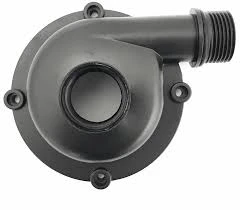Mobile:+86-311-808-126-83
Email:info@ydcastings.com
metal casting moulds
The Art and Science of Metal Casting Moulds
Metal casting is an age-old manufacturing process that involves pouring molten metal into a mold to create a desired shape. This technique has been instrumental in producing everything from intricate components in machinery to artistic sculptures. At the heart of this process lies the casting mold, a crucial element that dictates the quality, precision, and complexity of the final product. Understanding metal casting moulds is essential for anyone involved in the field of metallurgy, manufacturing, or design.
Types of Casting Moulds
Casting moulds can be classified into various types, each designed for specific applications and materials. The two primary categories are expendable and permanent molds. Expendable molds, made from materials like sand or plaster, are used for one-time casting processes. Sand casting, for instance, is one of the most common methods, where a sand mixture is packed around a pattern to create a mold. Once the metal is poured and solidifies, the mold is destroyed to retrieve the final product.
On the other hand, permanent molds, usually made from metal, can be reused multiple times. This type of mold is ideal for high-volume production as it offers better dimensional accuracy and surface finish. Processes like die casting utilize permanent molds to produce intricate parts with tight tolerances, making them suitable for industries like automotive and aerospace.
Material Selection for Moulds
Choosing the right material for casting molds is vital to achieving the desired results. For expendable molds, silica sand is commonly used due to its high melting point and ability to retain shape. Other materials include ceramic and shell molds, which offer greater surface finish and detail. For permanent molds, alloys such as aluminum or steel are preferred for their durability and thermal conductivity. The choice of material impacts not just the quality of the castings, but also the overall cost and efficiency of the production process.
metal casting moulds

Design Considerations
Designing an effective casting mold involves various considerations to ensure successful casting. The mold must be designed to facilitate the flow of molten metal, which requires attention to detail regarding the shape, size, and gating system of the mold. The gating system, which includes channels that direct the metal into the mold cavity, is crucial for preventing defects such as air entrapment or uneven filling. Furthermore, the design must accommodate for expansion and contraction of the metal during cooling to avoid distortion.
The Role of Technology
Advancements in technology have significantly enhanced the metal casting process. Computer-aided design (CAD) software allows engineers to create intricate mold designs with precision. Additionally, simulation software can predict how molten metal will flow through the mold, helping to identify potential issues before production begins. Additive manufacturing, or 3D printing, is also emerging as a method for creating complex molds rapidly, enabling more innovative designs that were previously thought impossible.
Conclusion
Metal casting moulds play a critical role in the manufacturing process, influencing the quality, cost, and capabilities of cast metal products. By understanding the types of molds, material choices, design considerations, and technological advancements, manufacturers can produce high-quality castings that meet the ever-increasing demands of various industries. As the field continues to evolve, the potential for innovation in mold design and casting techniques remains vast, promising exciting developments in the world of metal casting.
-
Understanding Metal Casting TechniquesNewsApr.02,2025
-
Understanding Exhaust Manifolds for Enhanced Engine PerformanceNewsApr.02,2025
-
The World of Metal FabricationNewsApr.02,2025
-
Key Components for Pump and Turbo EfficiencyNewsApr.02,2025
-
Essential Tools for Automotive Maintenance and RepairNewsApr.02,2025
-
Durable Valve Components for Effective Water ManagementNewsApr.02,2025











